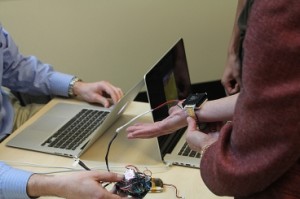18 Reasons Why Fossil Fuel Companies Are Killing Our Planet
Universities, religious groups and cities are seeking to divest from fossil fuels. Read more at The Brandeis Hoot.
1. Glaciers are melting. This is generally attributed to global warming, but NPR notes that it could also be from pollution, to which fossil fuel companies particularly contribute.

2. Dark particles, created by pollution, might speed up the rate at which ice melts. This is because dark colors absorb more energy, so darker snow will melt more quickly.

3. Some attribute terrible storms (Hurricane Irene, Hurricane Katrina, Hurricane Sandy, and more recently Typhoon Haiyan in the Philippines) to global climate change contributed by fossil fuel companies. Students at Brandeis are fasting to bring awareness to climate change caused by environmentally-harmful practices.

4. Multiple universities have committed to divest their resources from fossil fuel companies: College of the Atlantic, Foothill-De Anza Community College Foundation, Green Mountain College, Hampshire College, Naropa University, San Francisco State University Foundation, Sterling College, Unity College (as of December 2013).

5. When Glacier National Park was established in 1910, there were an estimated 150 glaciers. But now, there are less than 30 glaciers, and those left have only one third of their area remaining.

6. In September 2013, there were about 1,760 active rotary drilling rigs in the United States. [Baker Hughes Inc., Houston]

7. When drilling in the tar sands, sometimes massive spills happen. Oil can spew all over a neighborhood, hurting people in their own homes.

8. The Deepwater Horizon oil spill, in April 2010, caused 11 deaths and released 210 million gallons of oil into the Gulf of Mexico over the 87 days the pipe was open.

9. This represents the projected oil slick from the BP oil spill. Residents of the area still feel damage three years later. Fishing incomes have diminished; human health problems have increased.

10. Hydrofracking, a process of removing natural gas from the earth by creating a well and fractures in the bedrock, has caused some underground water reserves to become tainted with oil. This makes the water coming out of a tap flammable.

11. When drilling for oil in the tar sands, multiple pipeline leaks have occurred, covering homes in pools of oil. The oil comes up through the ground rather than flowing through the wells meant to gather it. This is becoming increasingly dangerous as companies drill deeper wells that have a greater likelihood of fracturing rock underground and creating spills.

12. College students, including some at Brandeis, have joined in protests advocating for an end to drilling in the Keystone pipeline.

13. Scientists say that the safe upper limit for CO2 in the atmosphere is about 350ppm. But they estimate that the amount of CO2 may already be 390ppm. This shows one year’s worth of CO2 emissions in New York City alone.

14. The top 100 coal and top 100 oil & gas companies have a combined value of $7.42 trillion as at February 2011.

15. The Potsdam Climate Institute says that for the world to stay below 2oC of warming, the global carbon budget needs to be 886 GtCO2 for 2000-2050. But by 2011, we have already used about 282 GtCO2, leaving just 565 GtCO2 for the next 40 years.

16. In 2012, the top five oil companies, made $137 billion in profit—that’s $375 million per day.

17. Wind power represents only a part of clean energy techniques. $260bn was invested globally last year into clean energy.

18. At Brandeis University, 79.03% of students voted in favor of divestment from fossil fuels.




